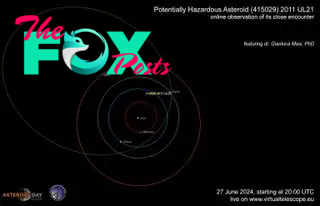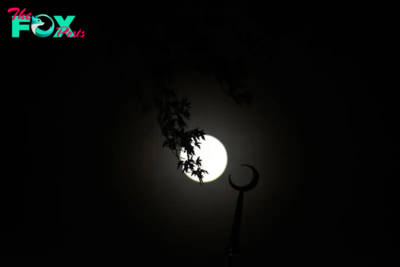Science
Mountain-size 'planet killer' asteroid will make a close approach to Earth this week — and you can watch it live
A massive "planet killer" asteroid will make a very close approach to Earth later this week, safely zipping past our planet at around 58,000 mph (93,000 km/h). The "potentially hazardous," mountain-size object is one of the largest space rocks to pass close to Earth in more than a century — and you can watch the close encounter live.
The asteroid, 2011 UL21, is a near-Earth asteroid, meaning its orbit occasionally puts it within 1.3 astronomical units (AU) of the sun — or roughly 1.3 times the average distance between Earth and the sun. It orbits our home star once every three years. Based on past observations, the space rock is somewhere between 1.1 and 2.4 miles (1.7 to 3.9 kilometers) wide, according to SpaceReference.org, meaning it's larger than 99% of known near-Earth asteroids, according to the European Space Agency (ESA).
2011 UL21 is likely at least 10 times smaller than the largest space rock to ever hit Earth, the Vredefort asteroid, and around five times smaller than the rock that wiped out the dinosaurs around 66 million years ago. However, while any potential impact from 2011 UL21 would be less extreme than these historic collisions, the asteroid still has the potential to cause damage on a continental scale and eject enough debris into the atmosphere to trigger significant climatic changes, which is why it is considered a "planet killer."
On June 27, 2011 UL21 will zoom past at around 4.1 million miles (6.6 million km) from Earth, which is closer than it's been to our planet for at least 110 years, according to simulations by NASA's Jet Propulsion Laboratory (JPL). At this distance, it is considered a potentially hazardous object by NASA. However, this is still around 17 times farther away from our planet than the moon.
Although the space rock poses no threat to Earth — either now or in the future — it is interesting because it's probably one of the 10 biggest asteroids to pass within 4.7 million miles (7.5 million km) of our planet since 1900, Gianluca Masi, an astrophysicist and director of the Virtual Telescope Project (VTP), wrote in a recent statement.
Related: 'Planet killer' asteroids are hiding in the sun's glare. Can we stop them in time?

You can watch 2011 UL21's closest approach thanks to a free livestream from the VTP, which will share the view of the asteroid from the Bellatrix Astronomical Observatory in Ceccano, Italy. The stream begins at 4 p.m. ET on June 27, with the close approach predicted to occur 15 minutes later.
-

 Science5h ago
Science5h agoHow to See the ‘Beaver’ Supermoon—the last of 2024
-

 Science5d ago
Science5d agoInside Capitol Hill’s Latest UFO Hearings
-

 Science5d ago
Science5d agoYou Won’t Want to Miss the Leonid Meteor Shower. Here’s How and When You Can See It
-

 Science6d ago
Science6d agoHere’s What Trump’s Win Means for NASA
-

 Science1w ago
Science1w agoWhy Risky Wildfire Zones Have Been Increasing Around the World
-

 Science1w ago
Science1w agoIt’s Time to Redefine What a Megafire Is in the Climate Change Era
-

 Science1w ago
Science1w ago4 Astronauts Return to Earth After Being Delayed by Boeing’s Capsule Trouble and Hurricane Milton
-

 Science1w ago
Science1w agoThe Elegance and Awkwardness of NASA’s New Moon Suit, Designed by Axiom and Prada



























